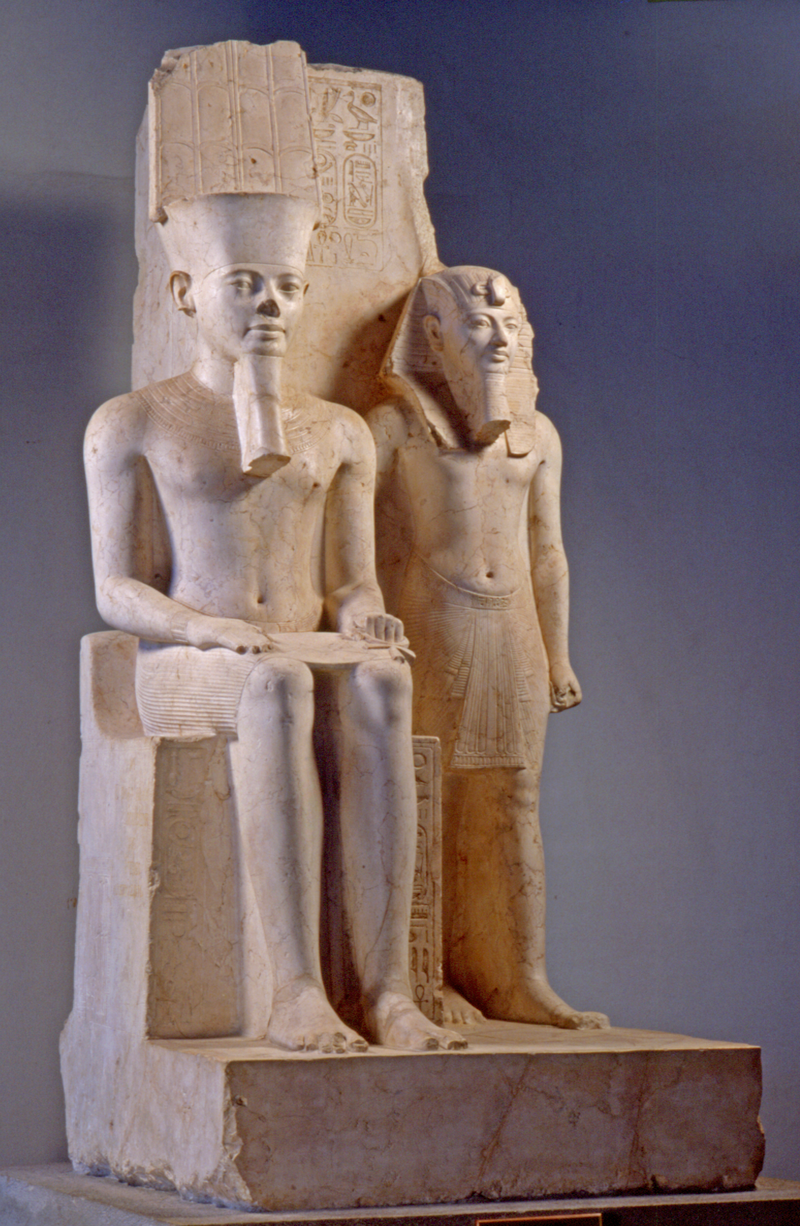King Horemheb-Mery-Amun: The last king of the Eighteenth Dynasty

◾At a time when Egypt was experiencing one of its most turbulent periods following Akhenaten’s religious reforms and the rapid succession of kings to the throne, a man emerged from the ranks of the army, not from a royal lineage. He was Horemheb-Mery-Amun, the great military leader who became pharaoh and restored Egypt’s stability and glory.
◾His Ascension to the Throne
Horemheb began his life as a soldier until he rose to prominence as a prominent military leader during the reign of King Akhenaten.
After the death of Tutankhamun and the brief accession of Vizier Ay to the throne, Horemheb assumed power, relying on his military strength and influence, becoming the last king of the Eighteenth Dynasty (1323–1295 BC).
◾His Internal Reforms
He issued the Horemheb Decree, a set of strict laws to combat corruption and bribery among officials.
He restored justice to the courts and taxes, restoring the people’s confidence in the state.
He restored traditional religion, so the temples flourished again and the influence of the priests of Amun rose again.
◾Religious Measures After Akhenaten’s Reign
Akhenaten’s reign had caused great division in the country due to his imposition of the worship of one god, Aten. When Horemheb assumed power, his priority was to restore the status of traditional deities, most notably Amun, who was the main state deity.
◾Horemheb’s Measures:
Restoring the Worship of Amun: He reinstated the priests of Amun and returned the temple’s properties and possessions that had been lost during Akhenaten’s reign.
Erasing Akhenaten’s Traces: He removed Akhenaten’s name from official records and destroyed his temples in Luxor and Karnak, using their stones to build his own.
Reviving Celebrations: He reinstated traditional religious festivals and ceremonies, which helped restore unity between the people and the temple.
◾His Achievements in Architecture and Construction
He undertook massive architectural projects, especially at Karnak and Giza.
He completed many temples begun by previous kings.
He left a clear architectural mark that made his reign unique in the history of ancient Egypt.
◾His Tomb in the Valley of the Kings
Horemheb was buried in tomb (KV57) in the Valley of the Kings.
It is considered one of the most beautiful royal tombs, with its walls decorated with texts and legends from the Book of Gates and the Book of the Dead.
The tomb’s scenes depicted the king’s eternal journey between the earthly world and the afterlife.
◾His Historical Legacy
Although he left no direct heir, his reign paved the way for the Nineteenth Dynasty, which produced great kings such as Ramesses I, Seti I, and Ramesses II.
Thus, Horemheb-Mery-Amun remains a reforming king and a great leader who ended chaos, restored stability to Egypt, and paved the way for a new golden age.
◾️Article by Eman Sayed..

